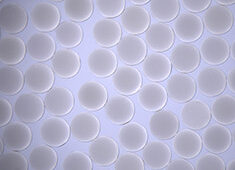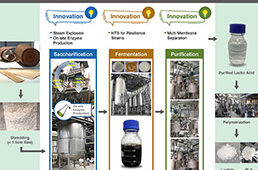
Engineers have created new computer maps that could help design platelet-matrix composites that replicate some of nature’s toughest substances.
Researchers from Rice University have developed a method to decode the interactions between materials and the structures they form, which could help maximize their strength, toughness, stiffness and fracture strain.
How a material breaks is one of the more important properties researchers consider when designing layered composites that mimic those found in nature. Scientists have often sought to replicate the light, tough, strong and stiff properties of natural materials, with either hard and soft components or combinations of different platelet types.
“Lightweight natural materials are abundant,” Rice materials scientist Rouzbeh Shahsavari said in a statement. “In these types of materials, two kinds of toughening happen. One comes before crack propagation, when the platelets slide against each other to relieve stress. The other is part of the beauty of these materials: the way they toughen after crack propagation.”
The researchers ran more than 400 computer simulations of platelet-matrix composite materials like mother-of-pearl to develop a design map that can aid with the synthesis of staggered composites for applications at any scale, including microelectronics, cars and spacecraft.
The new model integrates the geometries and properties of various platelet and matrix components to compute the composite’s strength, toughness, stiffness and fracture strain. By changing any architectural or compositional parameter, they can adjust the entire model as the user seeks the optimal psi—a quantification of its ability to avoid catastrophic failure.
Using a baseline model, the researchers were able to adjust four values for each simulation—characteristic platelet length, plasticity of the matrix, the platelet dissimilarity ration and the platelet overlap offset—all of which are important to the composite’s properties.
After the simulations, the researchers found that the greatest factor in psi was possibly platelet length. The model showed that short platelets largely yielded fracture control to the plasticity of the soft matrix, while long platelets take it back.
Platelet lengths that distribute the fracture evenly and allow maximum crack growth can achieve the optimal psi and make material better able to avoid catastrophic failure.
Shahsavari explained that cracks do not necessarily mean failure.
“Even when there is a crack, it does not mean a failure,” he said. “The crack may be arrested or deflected several times between the layers. Instead of going straight through the material to the surface, which is a catastrophic failure, the crack bumps into another layer and zigzags or forms another complex pattern that delays or entirely prevents the failure.
“This is because a long and complex crack trajectory requires much more energy to drive it, compared with a straight crack,” he added.
Crack-induced toughening in natural and biometric materials provides extra lines of defense against failure.
“The models uncovered nonintuitive synergies between the before- and after-crack toughening phenomena,” Shahsavari said. “They showed us what architectures and components would allow us to combine the best properties of each.”
The study was published in Journal of Mechanics and Physics of Solids.




